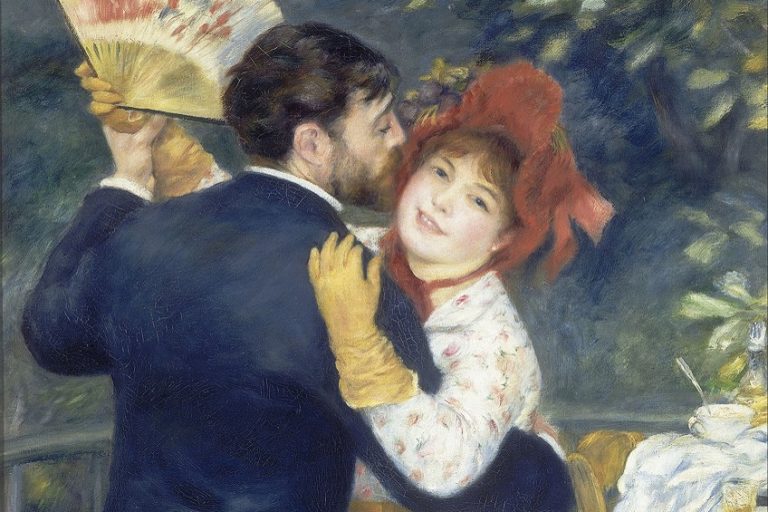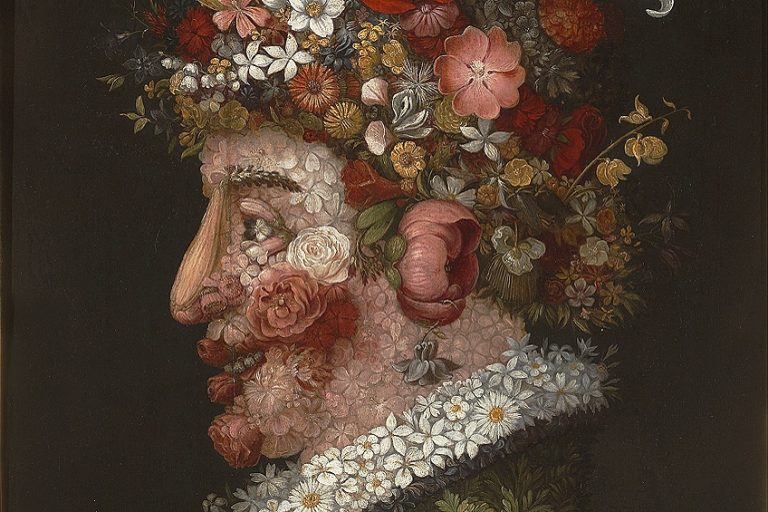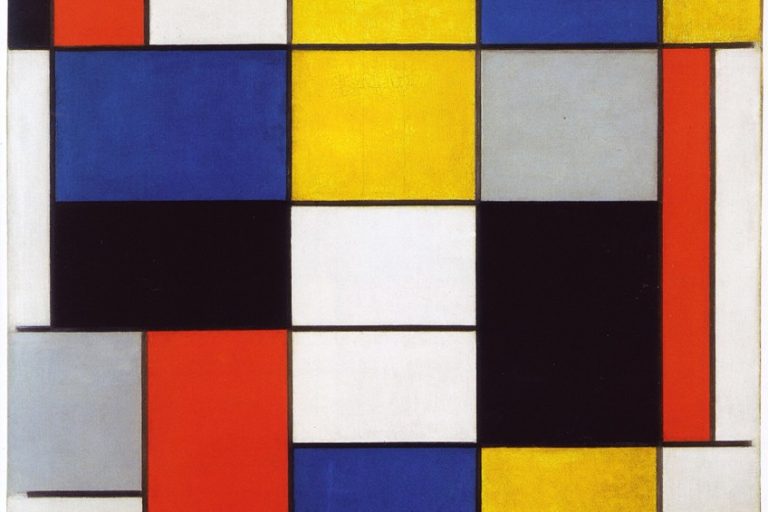“The Hay Wain” by John Constable – A Detailed Hay Wain Analysis
John Constable was a catalyst in landscape painting during the 19th century, and he became one of the most beloved artists of this genre during modern art. In the article below, you can learn more about these details about Constable, with a specific focus on his seminal painting, The Hay Wain (1821).
Artist Abstract: Who Was John Constable?
John Constable was born on June 11, 1776, and died on March 31, 1837. He became one of the most well-known landscape artists during the Romantic art movement. He was born in East Bergholt in Suffolk in England. In 1799 he studied at the Royal Academy of the Arts Schools. Although at one point in his life, he did not achieve wide financial success and earned money through portrait paintings, he became one of the most accomplished landscape painters. He was married to Maria Bicknell and reportedly had seven children.
Some of his famous paintings are “Dedham Vale” (1802), “The White Horse” (1819), and “Salisbury Cathedral from the Meadows” (1831).

The Hay Wain (1821) by John Constable in Context
| Artist | John Constable |
| Date Painted | 1821 |
| Medium | Oil on canvas |
| Genre | Landscape painting |
| Period / Movement | Romanticism |
| Dimensions (cm) | 130.2 x 185.4 |
| Series / Versions | Part of a series of landscape paintings termed the Six-Footers |
| Where Is It Housed? | National Gallery of London, United Kingdom |
| What It Is Worth | The exact price is uncertain, but it was reportedly sold in the 1820s for £400 by John Arrowsmith and bought in the 1840s for £378 by Rought, an art dealer who could have bought it for D.T. White. |
The article below will discuss The Hay Wain analysis in more detail, starting with a contextual overview of why Constable painted it and how it forms part of his series of “Six-Footers”. This will be followed by a formal analysis, taking a closer look at the subject matter and the visual components of the artwork through the lens of the art elements.
Contextual Analysis: A Brief Socio-Historical Overview
The Hay Wain by John Constable was initially titled Landscape: Noon by the artist, but reportedly his friend Archdeacon John Fisher gave it the alternative title of The Hay Wain. This was possibly due to the depicted wagon in the center of the composition; “wain” means wagon, and it would have been utilized for transporting hay collected from the surrounding fields.
The above-mentioned surrounding fields that Constable depicted were at Flatford Mill, which was his father’s (Golding Constable) corn mill.
The Hay Wain was exhibited in 1821 at the Royal Academy of the Arts. It was also showcased at the Paris Salon in 1924 after it was purchased by John Arrowsmith in 1824 for £250, alongside several of Constable’s other paintings, including View of the Stour Near Dedham (1822) and Yarmouth Jetty (1822).

The Hay Wain painting’s value is uncertain; however, it has been passed on from collector to collector over the years. During the 1820s, John Arrowsmith sold it for £400, and in the 1840s Rought reportedly bought it for £378, which was possibly for D.T. White who reportedly sold it to George Young. In recent years The Hay Wain painting value has been estimated to be within the millions.
However, according to news reports, this value has been tied to a painting that was very similar to the original, and reportedly also painted by Constable, but from a different angle.
The “Six-Footers”
The Hay Wain by John Constable forms part of a series of six paintings that have been titled his “Six-Footers”. These were named because the artist painted on canvases that measured around six feet. The first painting was titled The White Horse (1819) and is housed in The Frick Collection in New York City, United States.
The other paintings include Stratford Mill – The Young Waltonians (1820), which is at the National Gallery in London, View of the Stour Near Dedham (1822), which is housed at the Huntington Library and Art Gallery in San Marino in California, the United States, The Lock (1824), which is part of a private collection, and The Leaping Horse (1825), which is at The Royal Academy of Arts in London.
All the paintings depict the idyllic rural landscape of the River Stour and the various comings and goings of rural life. Interestingly, this was also near Constable’s home, which was in East Bergholt in Suffolk.
The Allures of an Idyllic Landscape
It is important to note that when John Constable painted The Hay Wain, along with his other landscape paintings, he was living through the Industrial Revolution in England. With this came new modes of enterprise and working opportunities in factories – urbanization was progressing, but so too was civil unrest.
“The Hay Wain” and many of Constable’s other paintings depict an idyllic country scene, and some have described it as “nostalgic”.

It reverts to a time of quietude in nature, and reportedly also Constable’s childhood. Furthermore, some believe that Constable touched upon the stresses prevalent between the farmers and the farmworkers during that time due to the loss of work from the industrial developments. His depiction of the workers further away in the background in The Hay Wain has been regarded as almost symbolic of this.
Constable’s Sketches
Interestingly, Constable made several preparatory sketches of The Hay Wain painting at his London studio. These include sketches of the woman and the wagon. The latter sketch is titled Sketch for “The Haywain” (c. 1820) and is housed at the Yale Center for British Art in New Haven, Connecticut in the United States. Another sketch is titled Full-Scale Study for The Hay Wain (c. 1821) and is housed at the Victoria and Albert Museum in London, United Kingdom.
This was created with oil paint and depicts a man sitting on a horse on the river bank in the foreground. Constable reportedly excluded this from the later iteration of “The Hay Wain”.
Formal Analysis: A Brief Compositional Overview
The Hay Wain by John Constable is a landscape painting depicting the River Stour in England. The formal analysis below will first discuss the subject matter further through a visual description and then the art elements (namely color, texture, line, shape, form, and space) that compose this naturalistic rendering. The art elements are known as the “building blocks” of visual compositions and are useful tools when understanding the visual language of a painting.

Subject Matter: Visual Description
The Hay Wain by John Constable depicts a cloudy yet sunny rural countryside day with the River Stour streaming into the composition from the right foreground, winding its way between the trees in the background. Interestingly, this river runs between Essex and Suffolk, which are two counties in England.
To the left of the composition is a cottage, which is known to have belonged to William (or Willy) Lott, who was a farmer that rented the land. There is also a dog walking along the outer embankment. Further into the background, just outside the house, is a woman on a small wooden deck filling her water pitchers.
To the right of the composition, and on the other side of the river, is a vast expanse of a green field where several figures are noticeable in the distance collecting hay. If you look closely, some of the figures are also packing hay onto their wagon. Towards the bottom right of the composition is a figure holding a long wooden stick in his right hand. He is noticeable in the bushes on the edge of the river, possibly getting into the small wooden boat that is stationed there.
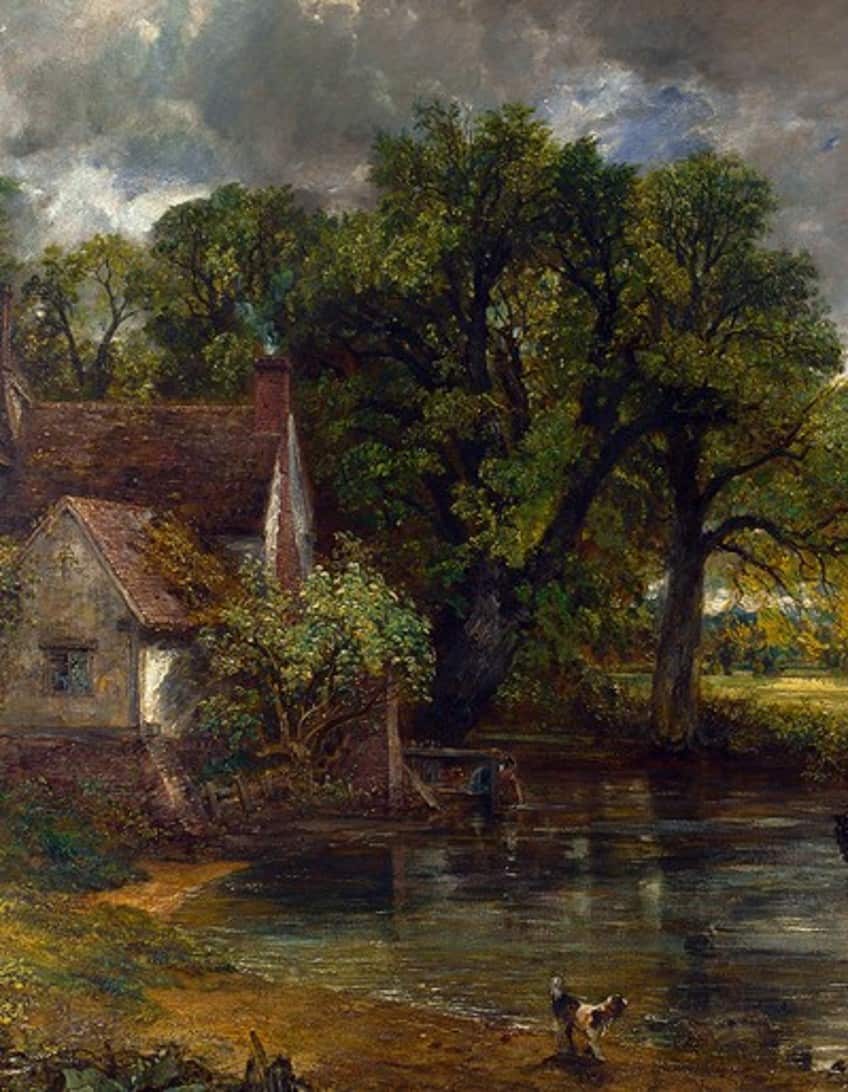
The center of the composition depicts three black horses pulling a large wooden wagon, steered by two men. The wagon is also empty and reportedly heading in the direction of the field to the right evident by the slight pull to the right of the front left wheel and in the direction of the ford that opens to the right of the river’s flow in the middle ground.
Color
The color composition consists of earthy colors like browns, greens, and blues, with some yellows and whites. Constable did not utilize any striking or discordant colors and created an overall color harmony. The lighter blue of the sky and white of the clouds create a subtle contrast against the darker greens and browns of the trees as well as the deeper reddish brown of the house to the left. There are also hints of red on the horses’ harnesses over their backs.
There is a beautiful blend of tones that suggest light and shadows. For example, the field in the middle ground is a lighter, almost golden green, with patches of golden-yellow that suggest the sunlight through the cotton wool-like clouds.
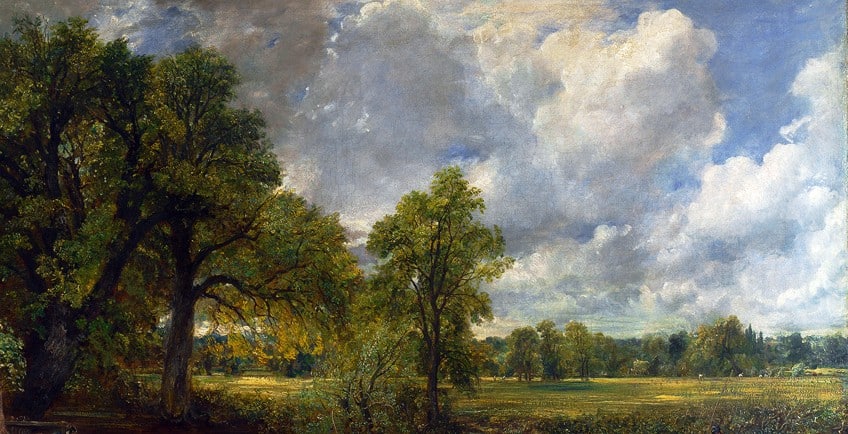
Constable also utilized tones to create a sense of depth and distance, noticed in the lightness of the trees on the horizon line near the middle ground. Additionally, the reflection of light on the water is created by the application of white.
Texture
There is a rich textural surface composing The Hay Wain by John Constable. The brushstrokes are expressively applied and when you look at it enlarged you will notice the somewhat vigorous application of paint.
Some brushstrokes appear thinly applied and others are thicker, which is known as impasto.

Interestingly, John Constable’s approach to applying brushstrokes was regarded as a move away in style compared to the Academic style of painting, the latter applied brushstrokes smoothly and with a level of precision. Constable was also criticized for this when his paintings were displayed.
Line
There are a variety of naturalistic, organic, and geometric lines in The Hay Wain painting. This can be found in the naturally curved outlines of the landscape, which subtly contrasts with the straight lines delineating the house to the left and part of the wagon in the center.

Shape and Form
Like the above-mentioned use of lines, there is a subtle contrast between the naturalistic (or organic) shapes and forms and the geometric shapes of the house and wagon. The house offers more angular edges and is composed of square, rectangular, and triangular shapes.
The river and trees create curved and free-flowing formations that lead the eye further into the distance, which are coupled with the amoeboid shapes of the clouds in the sky.
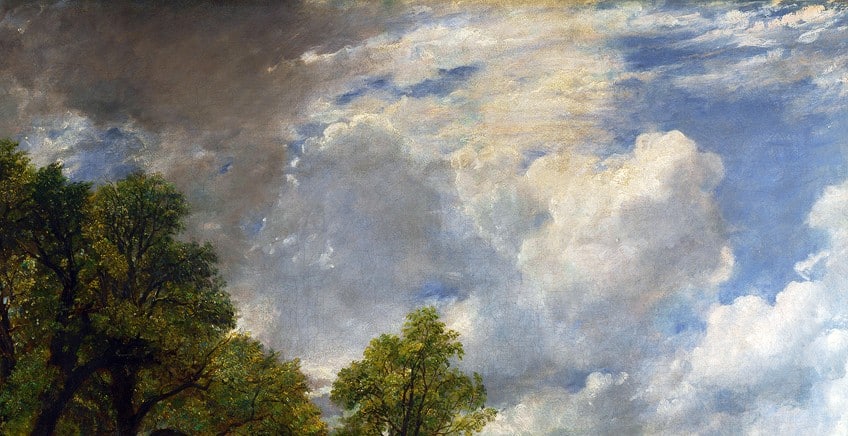
Space
The compositional space in The Hay Wain by John Constable consists of various aspects created through perspective and scale. For example, a sense of depth is created by the gap through the trees in the middle ground, which depicts the landscape in the background and indicates how far the space recedes. This is further emphasized by the winding flow of the river into the distance that we (the viewers) cannot see.
Constable also utilized scale to indicate space, which is through the diminished sizes of the figures in the background compared to the larger figures in the foreground.
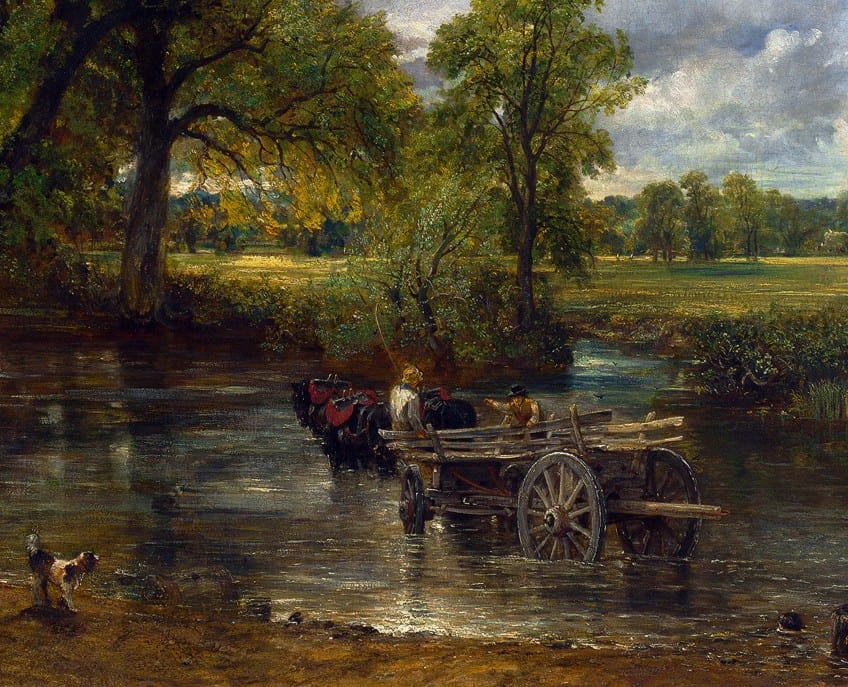
A Landscape Says a Thousand Words
John Constable has become one of the top landscape painters in art history and while his style divulged from the Academic style and evoked criticism, he nonetheless achieved a level of success, notably a gold medal for The Hay Wain from King Charles X of France during his exhibition at the Paris Salon in 1824.
This article discussed “The Hay Wain” analysis by John Constable and what made it not only one of the most idyllic landscape paintings during the Industrial Revolution, but also an influencing forerunner to future art movements like Impressionism. It also discussed Constable’s art style according to the art elements, and how the artist followed his own techniques compared to what was espoused by the traditional Academy’s style.
Frequently Asked Questions
Who Painted The Hay Wain?
The renowned landscape painter John Constable painted the oil on canvas known as The Hay Wain (1821). It is part of a series of paintings that were titled the so-called Six Footers, which all depicted the natural landscape of and around the River Stour, which is in East Anglia in England.
Why Is It Called The Hay Wain?
John Constable originally titled The Hay Wain as Landscape: Noon, but Archdeacon John Fisher gave it the former because of the wagon depicted in the painting that would have collected hay, as wain is another word for a wagon.
Where Is The Hay Wain by John Constable?
The oil on canvas The Hay Wain by John Constable is housed at the National Gallery of London in the United Kingdom. It was acquired by the gallery in 1886 by Henry Vaughn.
Alicia du Plessis is a multidisciplinary writer. She completed her Bachelor of Arts degree, majoring in Art History and Classical Civilization, as well as two Honors, namely, in Art History and Education and Development, at the University of KwaZulu-Natal, South Africa. For her main Honors project in Art History, she explored perceptions of the San Bushmen’s identity and the concept of the “Other”. She has also looked at the use of photography in art and how it has been used to portray people’s lives.
Alicia’s other areas of interest in Art History include the process of writing about Art History and how to analyze paintings. Some of her favorite art movements include Impressionism and German Expressionism. She is yet to complete her Masters in Art History (she would like to do this abroad in Europe) having given it some time to first develop more professional experience with the interest to one day lecture it too.
Alicia has been working for artincontext.com since 2021 as an author and art history expert. She has specialized in painting analysis and is covering most of our painting analysis.
Learn more about Alicia du Plessis and the Art in Context Team.
Cite this Article
Alicia, du Plessis, ““The Hay Wain” by John Constable – A Detailed Hay Wain Analysis.” Art in Context. May 15, 2023. URL: https://artincontext.org/the-hay-wain-by-john-constable/
du Plessis, A. (2023, 15 May). “The Hay Wain” by John Constable – A Detailed Hay Wain Analysis. Art in Context. https://artincontext.org/the-hay-wain-by-john-constable/
du Plessis, Alicia. ““The Hay Wain” by John Constable – A Detailed Hay Wain Analysis.” Art in Context, May 15, 2023. https://artincontext.org/the-hay-wain-by-john-constable/.






